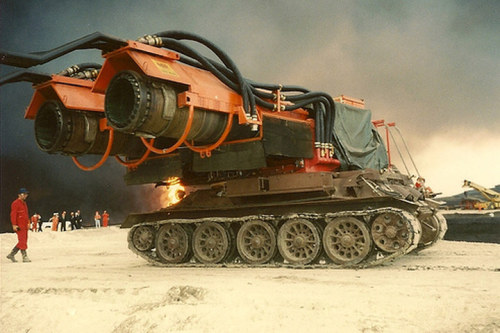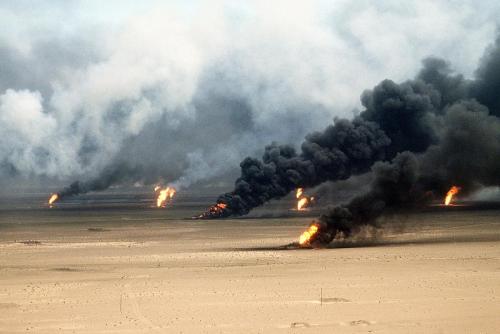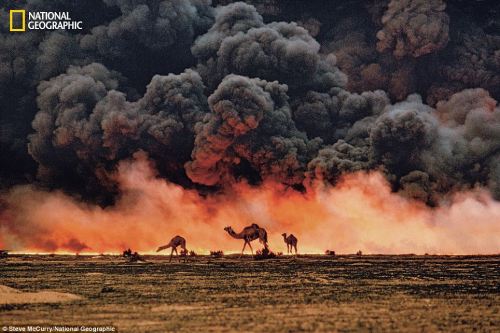Blowing out the Fires of Hell with The Big WindIn August of 1991 the Iraqi Army under Saddam Hussein
Blowing out the Fires of Hell with The Big WindIn August of 1991 the Iraqi Army under Saddam Hussein conquered and occupied the oil rich nation of Kuwait. Thus, NATO and Middle Eastern countries formed a massive coalition with the goal of ousting Iraqi forces from the country. After months of airstrikes which pounded the Iraqi Army, and with the prospect of a massive multinational invasion, it was clear among many in the Iraqi government that the Iraqi Army could not hold Kuwait. A scorched earth policy was set into motion beginning in January of 1991 in which Iraqi military forces destroyed Kuwait’s oil refineries and storage centers, while also setting alight over 700 oil wells across the country. The purpose of this policy was not only to deny Coalition forces a valuable Kuwaiti resource, but also to provide a smokescreen to hamper Coalition airstrikes and create an obstacle for Coalition ground forces. While Iraq’s scorched earth policies resulted in some modest military goals, the ecological nightmare it created was unprecedented in history. Thousands of tons of thick black soot was ejected into the atmosphere. At the time scientist feared that the result would be a change in climate conditions from the soot, chemicals, and greenhouse gasses. The great Carl Sagan himself predicted that temperatures in the northern hemisphere would drop 5 to 10 degrees. While none of that happened, what was truly devastating was the resulting oil spill. Between 25 - 50 million barrels of oil contaminated the sands of Kuwait, with another 9 million barrels contaminating the Persian Gulf. The job of putting out the fires was delegated to a number of firefighting and engineering companies. However the magnitude of the disaster was daunting, and engineers estimated that with traditional oil well firefighting techniques it would take 5 years to put out all of the well fires. Thus, firefighters and engineers were forced to come with some unorthodox methods to speed up the process. One ingenious invention was a Hungarian device called “The Big Wind” (top picture). The Big Wind was firefighting vehicle which consisted of the chassis of a Soviet T-34 tank with it’s turret mounted with the engines of a MiG-21 fighter jet. Reinforced with heat and fire resistant materials, the massive tank would drive to within 25 feet of the oil well fire, blast the fire with supersonic winds like a toddler blowing out birthday candles, while soaking the well with a 120 gallon a second stream of salt water pumped from the Persian Gulf mixed with fire retardant materials. Once out, oil workers would cap off the well, preventing the streaming of oil from the earth.Thanks to the Big Wind and other ingenious technologies, the last oil well was capped on November 6th, 1991, way ahead of the five year prediction of engineers. The environmental effects of disaster, however, are still being felt today. -- source link
Tumblr Blog : peashooter85.tumblr.com
#history#gulf war#oil spill#firefighting#tanks#big wind#oil#oil fire



